Peter Gustave Borden
age ~75
from San Mateo, CA
- Also known as:
-
- Peter G Borden
- Peter Te Borden
- Peter Heu Borden
- Paulina Borden
- Julia Borden
- Gale Borden
- Phone and address:
-
118 Seville Way, San Mateo, CA 94402
6503487753
Peter Borden Phones & Addresses
- 118 Seville Way, San Mateo, CA 94402 • 6503487753
- 354 Tennessee Ln, Palo Alto, CA 94306
- Menlo Park, CA
- San Francisco, CA
- Revere, MA
- 118 Seville Way, San Mateo, CA 94402
Medicine Doctors

Peter S. Borden
view sourceSpecialties:
Orthopedic Sports Medicine, Orthopaedic Surgery
Work:
Sports & Spine Orthopedic
23456 Hawthorne Blvd STE 200, Torrance, CA 90505
3103758700 (phone), 3103758776 (fax)
23456 Hawthorne Blvd STE 200, Torrance, CA 90505
3103758700 (phone), 3103758776 (fax)
Education:
Medical School
George Washington University School of Medicine and Health Science
Graduated: 1995
George Washington University School of Medicine and Health Science
Graduated: 1995
Procedures:
Carpal Tunnel Decompression
Joint Arthroscopy
Knee Arthroscopy
Lower Arm/Elbow/Wrist Fractures and Dislocations
Shoulder Arthroscopy
Shoulder Surgery
Hip/Femur Fractures and Dislocations
Joint Arthroscopy
Knee Arthroscopy
Lower Arm/Elbow/Wrist Fractures and Dislocations
Shoulder Arthroscopy
Shoulder Surgery
Hip/Femur Fractures and Dislocations
Conditions:
Fractures, Dislocations, Derangement, and Sprains
Internal Derangement of Knee
Internal Derangement of Knee Cartilage
Intervertebral Disc Degeneration
Lateral Epicondylitis
Internal Derangement of Knee
Internal Derangement of Knee Cartilage
Intervertebral Disc Degeneration
Lateral Epicondylitis
Languages:
English
Spanish
Spanish
Description:
Dr. Borden graduated from the George Washington University School of Medicine and Health Science in 1995. He works in Torrance, CA and specializes in Orthopedic Sports Medicine and Orthopaedic Surgery. Dr. Borden is affiliated with Torrance Memorial Medical Center.
Resumes

President, Board Member
view sourceLocation:
118 Seville Way, San Mateo, CA 94402
Industry:
Medical Devices
Work:
Jasper Ridge Inc.
President, Board Member
Gridtential Energy
Founder, Head Technical Advisory Board
Applied Materials 2003 - 2009
Director, Distinguished Mts
Boxer Cross Jan 1996 - May 2003
Cto, Board Member, Founder
High Yield Technology 1986 - 1996
Cto, Board Member, Founder
President, Board Member
Gridtential Energy
Founder, Head Technical Advisory Board
Applied Materials 2003 - 2009
Director, Distinguished Mts
Boxer Cross Jan 1996 - May 2003
Cto, Board Member, Founder
High Yield Technology 1986 - 1996
Cto, Board Member, Founder
Education:
Stanford University
Master of Science, Doctorates, Masters, Doctor of Philosophy, Applied Physics Massachusetts Institute of Technology
Master of Science, Doctorates, Masters, Doctor of Philosophy, Applied Physics Massachusetts Institute of Technology
Skills:
Photovoltaics
Thin Films
Semiconductors
Solar Cells
Start Ups
Semiconductor Industry
Physics
Metrology
Materials Science
Energy
Batteries
Design of Experiments
Nanotechnology
Characterization
Solar Energy
Engineering Management
Device Physics
Technology Development
Failure Analysis
Cleantech
Ic
Thin Films
Semiconductors
Solar Cells
Start Ups
Semiconductor Industry
Physics
Metrology
Materials Science
Energy
Batteries
Design of Experiments
Nanotechnology
Characterization
Solar Energy
Engineering Management
Device Physics
Technology Development
Failure Analysis
Cleantech
Ic
Languages:
German

Peter Borden
view source
Peter Borden
view source
Peter Borden
view source
Peter Borden
view source
Peter Borden
view source
Peter Borden
view source
Peter Borden
view sourceName / Title
Company / Classification
Phones & Addresses
PILSEN PROPERTIES, LIMITED
Us Patents
-
Apparatus And Method For Determining The Active Dopant Profile In A Semiconductor Wafer
view source -
US Patent:6426644, Jul 30, 2002
-
Filed:Aug 21, 2001
-
Appl. No.:09/935128
-
Inventors:Peter G. Borden - San Mateo CA
Regina G. Nijmeijer - Mountain View CA -
Assignee:Boxer Cross Inc. - Menlo Park CA
-
International Classification:G01R 3126
-
US Classification:324765, 324752, 324766, 356445
-
Abstract:A method (1) creates charge carriers in a concentration that changes in a periodic manner (also called âmodulationâ) only with respect to time, and (2) determines the umber of charge carriers created in the carrier creation region by measuring an interference signal obtained by interference between a reference beam and a portion of a probe beam that is reflected by charge carriers at various depths of the semiconductor material, and comparing the measurement with corresponding values obtained by simulation (e. g. in graphs of such measurements for different junction depths). Various properties of the reflected portion of the probe beam (such as power and phase) are functions of the depth at which the reflection occurs, and can be measured to determine the depth of the junction, and the profile of active dopants. Therefore, the just-described reflected portion of the probe beam is interfered with a reference beam formed by a portion of probe beam reflected by the front surface of the semiconductor material, and phase and amplitude of the interference signal resulting therefrom are both measured. Alternatively, phase difference between a first interference signal (obtained by interference of (1) a variable phase beam and (2) the portion of probe beam reflected by the front surface) and a second interference signal (obtained by interference of (1) the variable phase beam and (2) a portion of the probe beam reflected by charge carriers at various depths) indicates the junction depth.
-
Apparatus And Method For Determining The Active Dopant Profile In A Semiconductor Wafer
view source -
US Patent:6483594, Nov 19, 2002
-
Filed:Nov 26, 2001
-
Appl. No.:09/994441
-
Inventors:Peter G. Borden - San Mateo CA
Regina G. Nijmeijer - Mountain View CA -
Assignee:Boxer Cross, INC - Menlo Park CA
-
International Classification:G01B 902
-
US Classification:356502
-
Abstract:A method (1) creates charge carriers in a concentration that changes in a periodic manner (also called âmodulationâ) only with respect to time, and (2) determines the number of charge carriers created in the carrier creation region by measuring an interference signal obtained by interference between a reference beam and a portion of a probe beam that is reflected by charge carriers at various depths of the semiconductor material, and comparing the measurement with corresponding values obtained by simulation (e. g. in graphs of such measurements for different junction depths). Various properties of the reflected portion of the probe beam (such as power and phase) are functions of the depth at which the reflection occurs, and can be measured to determine the depth of the junction, and the profile of active dopants. Therefore, the just-described reflected portion of the probe beam is interfered with a reference beam formed by a portion of probe beam reflected by the front surface of the semiconductor material, and phase and amplitude of the interference signal resulting therefrom are both measured. Alternatively, a phase difference between a first interference signal (obtained by interference of (1) a variable phase beam and (2) the portion of probe beam reflected by the front surface) and a second interference signal (obtained by interference of (1) the variable phase beam and (2) a portion of the probe beam reflected by charge carriers at various depths) indicates the junction depth.
-
Apparatus And Method For Evaluating A Semiconductor Wafer
view source -
US Patent:6489801, Dec 3, 2002
-
Filed:Apr 6, 2000
-
Appl. No.:09/544280
-
Inventors:Peter G. Borden - San Mateo CA 94402
Regina G. Nijmeijer - Mountain View CA 94043
Jiping Li - Mountain View CA 94043 -
International Classification:G01R 3126
-
US Classification:324766, 324752, 324765, 356432, 356445
-
Abstract:An apparatus and method uses diffusive modulation (without generating a wave of carriers) for measuring a material property (such as any one or more of: mobility, doping, and lifetime) that is used in evaluating a semiconductor wafer. The measurements are carried out in a small area, for use on wafers having patterns for integrated circuit dice. The measurements are based on measurement of reflectance, for example as a function of carrier concentration. In one implementation, the semiconductor wafer is illuminated with two beams, one with photon energy above the bandgap energy of the semiconductor, and another with photon energy near or below the bandgap. The diameters of the two beams relative to one another are varied to extract additional information about the semiconductor material, for use in measuring, e. g. lifetime.
-
Evaluating A Geometric Or Material Property Of A Multilayered Structure
view source -
US Patent:6812047, Nov 2, 2004
-
Filed:Mar 8, 2000
-
Appl. No.:09/521232
-
Inventors:Peter G. Borden - San Mateo CA
Jiping Li - Fremont CA -
Assignee:Boxer Cross, Inc. - Santa Clara CA
-
International Classification:H01L 2100
-
US Classification:438 16, 356369
-
Abstract:A structure having a number of traces passing through a region is evaluated by using a beam of electromagnetic radiation to illuminate the region, and generating an electrical signal that indicates an attribute of a portion (also called âreflected portionâ) of the beam reflected from the region. The just-described acts of âilluminatingâ and âgeneratingâ are repeated in another region, followed by a comparison of the generated signals to identify variation of a property between the two regions. Such measurements can identify variations in material properties (or dimensions) between different regions in a single semiconductor wafer of the type used in fabrication of integrated circuit dice, or even between multiple such wafers. In one embodiment, the traces are each substantially parallel to and adjacent to the other, and the beam has wavelength greater than or equal to a pitch between at least two of the traces. In one implementation the beam is polarized, and can be used in several ways, including, e. g.
-
Use Of A Coefficient Of A Power Curve To Evaluate A Semiconductor Wafer
view source -
US Patent:6812717, Nov 2, 2004
-
Filed:Mar 5, 2001
-
Appl. No.:09/799481
-
Inventors:Peter G. Borden - San Mateo CA
Regina G. Nijmeijer - Campbell CA
Beverly J. Klemme - Palo Alto CA -
Assignee:Boxer Cross, Inc - Santa Clara CA
-
International Classification:G01R 3126
-
US Classification:324752, 324766, 356432, 356447
-
Abstract:A coefficient of a function that relates a measurement from a wafer to a parameter used in making the measurement (such as the power of a beam used in the measurement) is determined. The coefficient is used to evaluate the wafer (e. g. to accept or reject the wafer for further processing), and/or to control fabrication of another wafer. In one embodiment, the coefficient is used to control operation of a wafer processing unit (that may include, e. g. an ion implanter), or a heat treatment unit (such as a rapid thermal annealer).
-
Measurement Of Lateral Diffusion Of Diffused Layers
view source -
US Patent:6878559, Apr 12, 2005
-
Filed:Sep 23, 2002
-
Appl. No.:10/253121
-
Inventors:Peter G. Borden - San Mateo CA, US
G. Jonathan Kluth - Los Gatos CA, US
Eric Paton - Morgan Hill CA, US -
Assignee:Applied Materials, Inc. - Santa Clara CA
Advanced Micro Devices, Inc. - Sunnyvale CA -
International Classification:H01L021/66
-
US Classification:438 14, 438 15, 438 16, 324765, 356432
-
Abstract:Any semiconductor wafer fabrication process may be changed to monitor lateral abruptness of doped layers as an additional step in the wafer fabrication process. In one embodiment, a test structure including one or more doped regions is formed in a production wafer (e. g. simultaneously with one or more transistors) and one or more dimension(s) of the test structure are measured, and used as an estimate of lateral abruptness in other doped regions in the wafer, e. g. in the simultaneously formed transistors. Doped regions in test structures can be located at regularly spaced intervals relative to one another, or alternatively may be located with varying spacings between adjacent doped regions. Alternatively or in addition, multiple test structures may be formed in a single wafer, with doped regions at regular spatial intervals in each test structure, while different test structures have different spatial intervals.
-
Evaluating A Multi-Layered Structure For Voids
view source -
US Patent:6885444, Apr 26, 2005
-
Filed:Mar 1, 2002
-
Appl. No.:10/090262
-
Inventors:Peter G. Borden - San Mateo CA, US
-
Assignee:Boxer Cross Inc - Santa Clara CA
-
International Classification:G01N021/88
-
US Classification:3562398, 356369, 3562374, 3562375
-
Abstract:A method and apparatus measure properties of two layers of a damascene structure (e. g. a silicon wafer during fabrication), and use the two measurements to identify a location as having voids. The two measurements may be used in any manner, e. g. compared to one another, and voids are deemed to be present when the two measurements diverge from each other. In response to the detection of voids, a process parameter used in fabrication of the damascene structure may be changed, to reduce or eliminate voids in to-be-formed structures.
-
Apparatus And Method For Determining The Active Dopant Profile In A Semiconductor Wafer
view source -
US Patent:6885458, Apr 26, 2005
-
Filed:Aug 19, 2002
-
Appl. No.:10/223952
-
Inventors:Peter G. Borden - San Mateo CA, US
Regina G. Nijmeijer - Mountain View CA, US -
Assignee:Applied Materials, Inc. - Santa Clara CA
-
International Classification:G01B011/02
-
US Classification:356502, 356445
-
Abstract:A method (1) creates charge carriers in a concentration that changes in a periodic manner (also called “modulation”) only with respect to time, and (2) determines the number of charge carriers created in the carrier creation region by measuring an interference signal obtained by interference between a reference beam and a portion of a probe beam that is reflected by charge carriers at various depths of the semiconductor material, and comparing the measurement with corresponding values obtained by simulation (e. g. in graphs of such measurements for different junction depths). Various properties of the reflected portion of the probe beam (such as power and phase) are functions of the depth at which the reflection occurs, and can be measured to determine the depth of the junction, and the profile of active dopants. Therefore, the just-described reflected portion of the probe beam is interfered with a reference beam formed by a portion of probe beam reflected by the front surface of the semiconductor material, and phase and amplitude of the interference signal resulting therefrom are both measured. Alternatively, a phase difference between a first interference signal (obtained by interference of (1) a variable phase beam and (2) the portion of probe beam reflected by the front surface) and a second interference signal (obtained by interference of (1) the variable phase beam and (2) a portion of the probe beam reflected by charge carriers at various depths) indicates the junction depth.
License Records
Peter S. Borden
License #:
36264 - Expired
Category:
Orthopaedic Surgery
Type:
Resident/Fellow
Classmates

Peter Borden
view sourceSchools:
University of Penn Philadelphia PA 1988-1992
Community:
Susan Holmes, Elizabeth Quinn

Peter Borden
view sourceSchools:
Metropolitan Learning Ce High School Portland OR 1998-2002
Community:
Amelia Scheider, Tahja Whiteley, Cristina Haggarty, Emily Spray, Mikee Hute, Taryn Winterholler, Elysia Burgess, David Giddens, Jennifer Hastings

Metropolitan Learning Ce ...
view sourceGraduates:
Peter Fassett (1973-1977),
Peter Borden (1998-2002),
Luke Yablonsky (1993-1997),
Daniel Williams (1976-1980)
Peter Borden (1998-2002),
Luke Yablonsky (1993-1997),
Daniel Williams (1976-1980)
Youtube
Myspace
Googleplus

Peter Borden
Work:
Sapient - Executive, Healthcare (1995)
Yale School of Medicine - Research Assistant (1992-1994)
Memorial Sloan Kettering Cancer Center - Research Assistant (1994-1995)
Yale School of Medicine - Research Assistant (1992-1994)
Memorial Sloan Kettering Cancer Center - Research Assistant (1994-1995)
Education:
University of Pennsylvania - Biological Basis of Behavior, Pace University - Computer Science
About:
About me? Healthcare geek. Convinced that global health is just starting along of the most disruptive paths of any industry in recent times, and that all of its segments are converging in fascinating ...
Tagline:
Healthcare & Tech Geek. Love the promise of the internet: Connect, Inform, Share, Engage.
Bragging Rights:
Enjoying yet another day in this beautiful world surrounded by wonder and potential.

Peter Borden
Education:
Georgia Institute of Technology - Biomedical Engineering, Ph.D, Rice University - Bioengineering
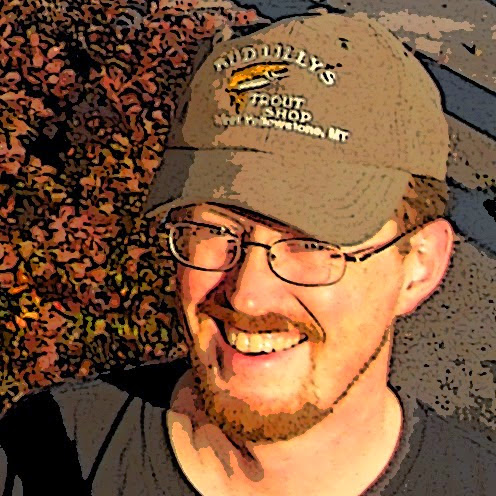
Peter Borden
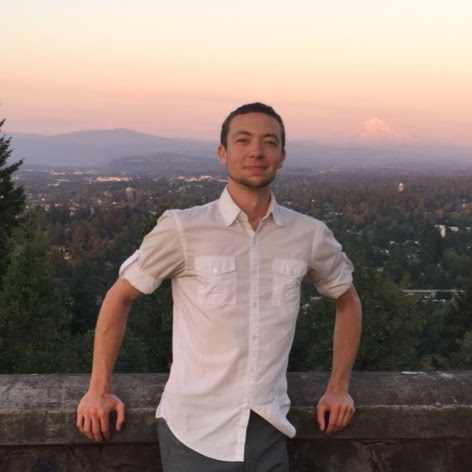
Peter Borden
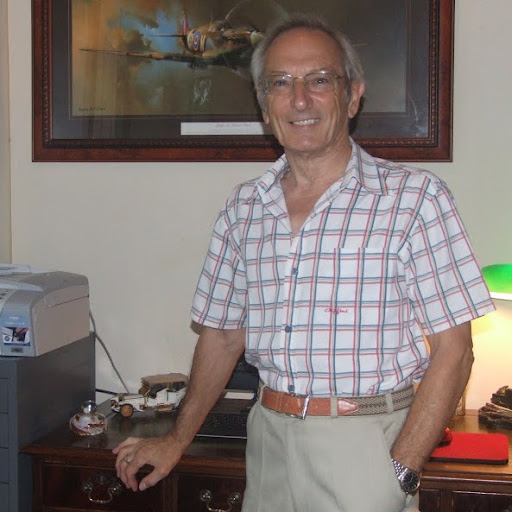
Peter Borden

Peter Borden
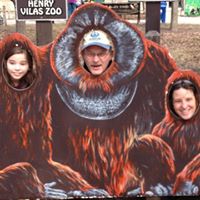
Peter Borden
view source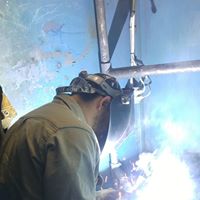
Peter Borden
view source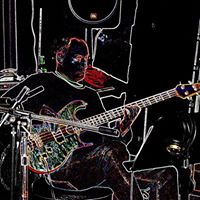
Peter Borden
view source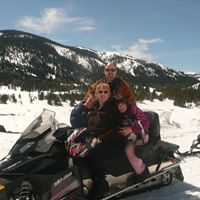
Peter Borden
view source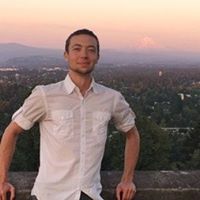
Peter Borden
view source
Peter Borden
view source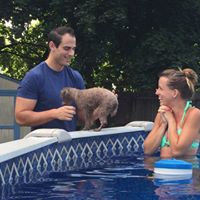
Peter Borden
view source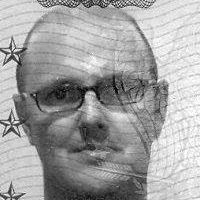
Gail Peter Borden
view sourcePlaxo

Peter Borden
view sourceBoston, MAVice President at Sapient Past: Research Assistant at Memorial Sloan Kettering Cancer Center, Research Assistant at Yale...
Get Report for Peter Gustave Borden from San Mateo, CA, age ~75






